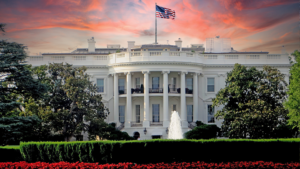Summary
Congress’s passage of a continuing resolution provides temporary relief until March but highlights critical gaps in public health and technology preparedness. Programs like BARDA and the Strategic National Stockpile require expanded funding to tackle emerging pathogens, supply chain vulnerabilities, and diagnostic gaps. Beyond PAHPA, overlooked threats like antimicrobial resistance, healthcare cybersecurity, and climate-driven diseases demand immediate attention. Congress must act decisively to secure long-term funding and address these systemic challenges to ensure resilience and innovation.
Congress’s passage of a continuing resolution (CR) has averted a shutdown and provided temporary relief until late March. However, this short-term fix exposes significant gaps in public health and technology preparedness that demand immediate attention. As critical programs approach expiration and threats beyond the Pandemic and All-Hazards Preparedness Act (PAHPA) remain unresolved, lawmakers have a narrowing window to secure lasting solutions for emerging and overlooked risks.
Renewed Focus Needed for Expiring Programs
PAHPA’s reauthorization through fiscal year 2026 preserves many vital initiatives. However, several programs lack the comprehensive funding and updates needed to remain effective in the face of evolving threats.
BARDA: Leading the Fight Against Emerging Pathogens
The Biomedical Advanced Research and Development Authority (BARDA) plays a pivotal role in developing medical countermeasures for viral threats, including the hypothetical “Disease X.” Although authorized under Section 626, persistent funding shortfalls hinder BARDA’s ability to accelerate research into next-generation vaccines and therapeutics. Without robust investments, the nation risks falling behind in preparing for unknown future pathogens.
Modernizing the Strategic National Stockpile
The Strategic National Stockpile (SNS), a linchpin of the U.S. emergency response system, remains under strain. Section 625 of PAHPA reauthorizes SNS funding but does not address gaps revealed during the COVID-19 pandemic:
- Supply Chain Vulnerabilities: Reliance on foreign manufacturers for personal protective equipment (PPE) and medical supplies persists.
- Domestic Production Shortfalls: Investments in U.S.-based production of critical materials are urgently needed to ensure availability during crises.
Expanding Diagnostic Infrastructure
Section 623 prioritizes pandemic-level diagnostic testing, but ongoing funding limitations restrict efforts to combat broader health challenges, such as antibiotic-resistant infections and seasonal respiratory illnesses. Enhanced investments in AI-driven diagnostics and genomic surveillance at the state and local levels would significantly improve the nation’s ability to detect and respond to emerging threats.
Beyond PAHPA: Addressing Overlooked Risks
While PAHPA addresses key preparedness challenges, several critical vulnerabilities remain outside the scope.
Antimicrobial Resistance: The Silent Global Threat
Antimicrobial resistance (AMR) claims over 1.27 million lives annually worldwide. Section 624 acknowledges this escalating threat, but funding is insufficient to implement the National Action Plan for Combating Antibiotic-Resistant Bacteria effectively. Without targeted federal investments:
- Drug Development Stagnates: Incentives are needed to revitalize the antibiotic pipeline.
- Surveillance Gaps Persist: Expanding surveillance infrastructure would enhance detection and response.
- Partnerships Lag: Public-private collaborations are vital to accelerating next-generation antibiotic development.
Cybersecurity: Safeguarding Healthcare Systems
The healthcare sector has experienced a 94% increase in ransomware attacks since 2021. Despite this, Section 622 emphasizes emergency responses rather than sustained defenses. To address escalating threats, investments are needed in:
- Workforce Development: Training cybersecurity professionals to fill critical gaps.
- Infrastructure Modernization: Upgrading hospital systems with real-time threat detection capabilities.
Climate Change: A Growing Public Health Challenge
Rising temperatures and extreme weather are driving the spread of diseases like dengue fever, Zika, and Lyme disease. Yet, PAHPA does not adequately address climate-related health risks. Targeted investments are essential for:
- Disease Surveillance and Prevention: Strengthening vector control programs and monitoring disease spread.
- Vaccine Development: Funding research into vaccines for climate-accelerated pathogens.
Emerging Technology: Advancing Health Innovation
Advanced technologies such as artificial intelligence, machine learning, and biomanufacturing offer transformative solutions for public health preparedness. Yet, inconsistent funding for small- and mid-sized biotech firms limits progress. Strategic federal investments could:
- Accelerate the development of AI-driven diagnostics.
- Enhance biomanufacturing capabilities for vaccines and therapeutics.
- Solidify U.S. leadership in health innovation.
Congress’s Path Forward
The passage of a CR provides a brief reprieve until March, but temporary fixes cannot resolve these systemic challenges. To safeguard public health and national security, Congress must:
- Strengthen Existing Programs: Ensure stable, long-term funding for BARDA, the SNS, and diagnostic testing infrastructure, with an expanded focus on emerging challenges.
- Combat Antimicrobial Resistance: Provide financial incentives for antibiotic research, scale up surveillance, and fully implement the National Action Plan.
- Bolster Cybersecurity: Allocate resources for healthcare system upgrades, workforce training, and proactive threat mitigation.
- Address Climate-Driven Health Risks: Fund surveillance, vector control, and vaccine development for climate-related diseases.
- Invest in Emerging Technologies: Prioritize biotech innovation, particularly in AI, diagnostics, and biomanufacturing.
From Crisis Management to Resilience: The Opportunity Ahead
While the continuing resolution buys time, it cannot serve as a long-term strategy. Congress has a rare opportunity to close the preparedness gaps exposed by the pandemic and address emerging threats – from antimicrobial resistance to cybersecurity vulnerabilities and climate-related health risks. Proactive investments today will not only strengthen preparedness and enhance resilience but also solidify America’s leadership in public health and technology innovation.
Decisive action is not optional. Without it, we risk repeating past mistakes – unprepared, underfunded, and vulnerable to future crises.







